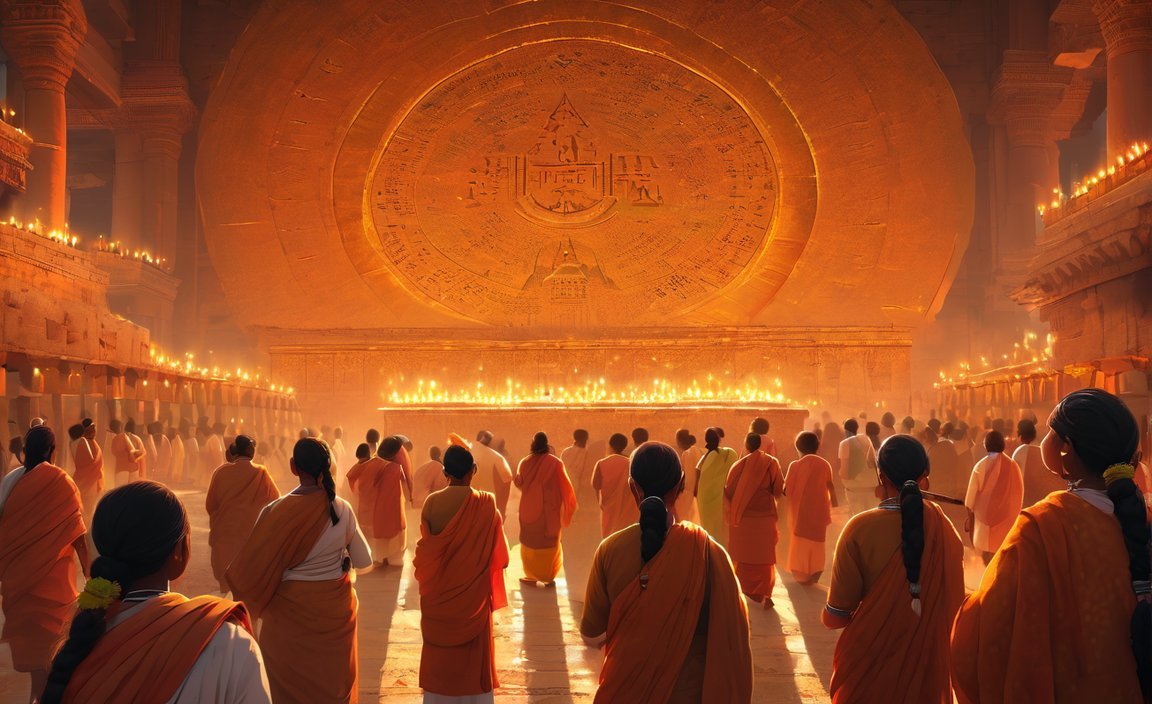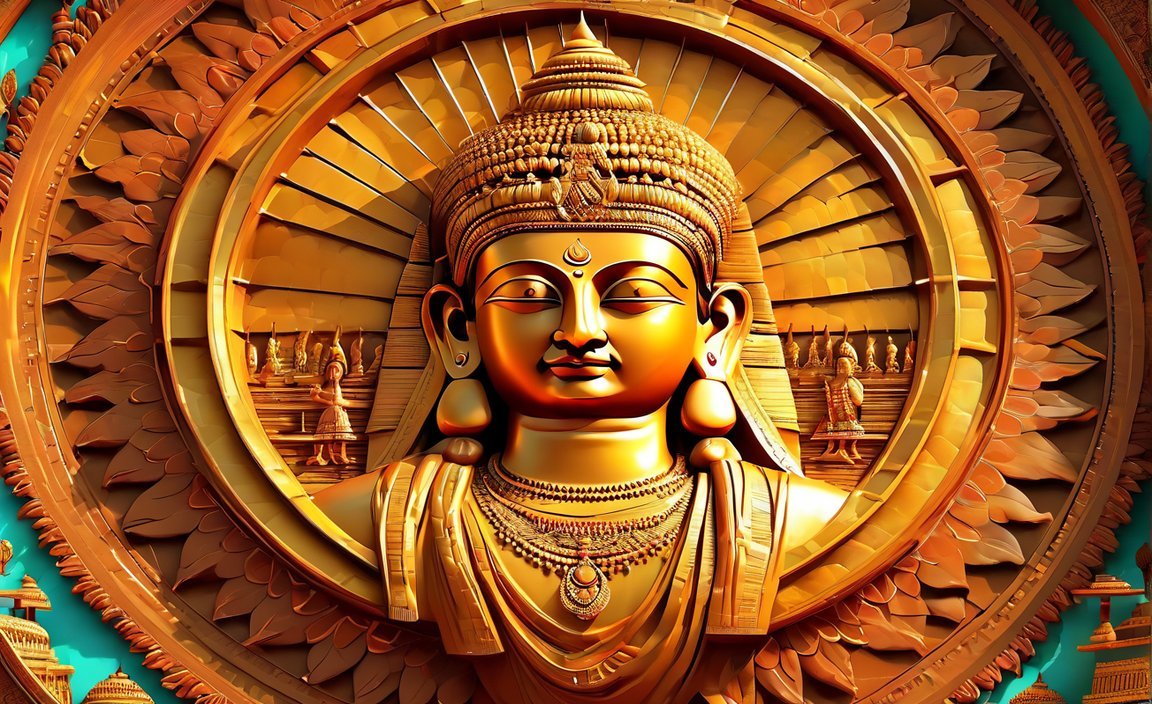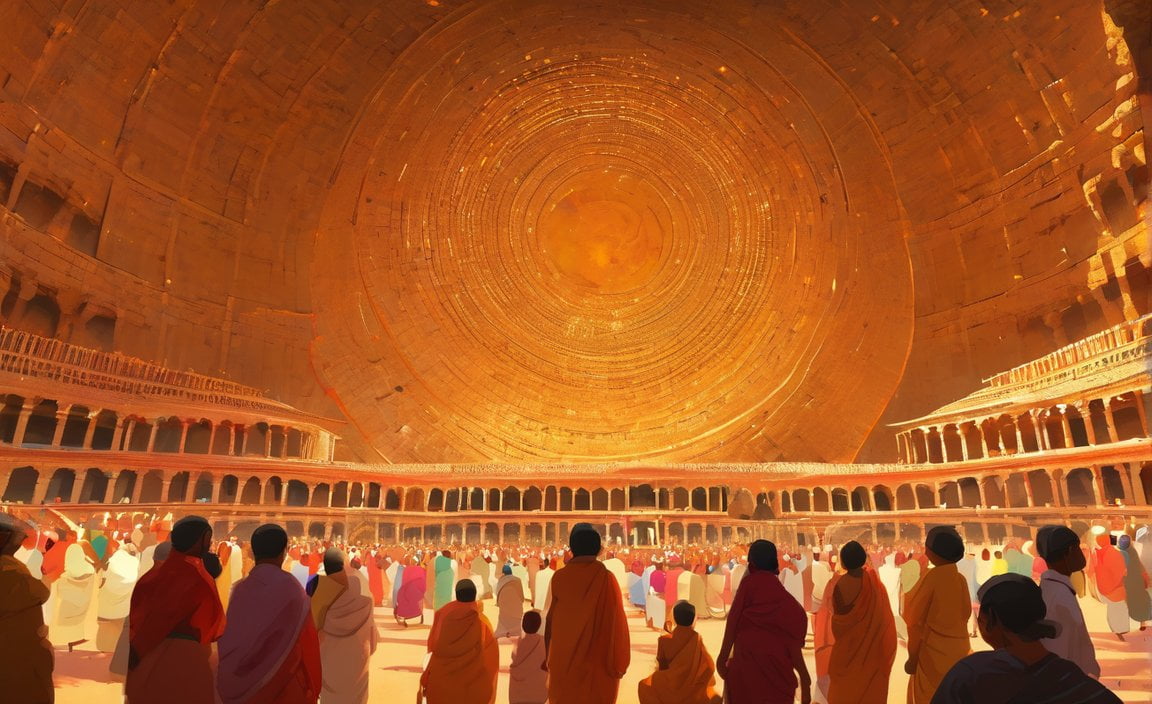Discover the fascinating facts of the Indian Constitution and delve into the remarkable history and intricacies of this monumental document. As we explore the amazing facts about the Indian Constitution, you will be introduced to a world of legal brilliance and profound democratic ideals that have shaped the nation’s governance for decades. From its inception in 1950 to its enduring influence on Indian society, the Indian Constitution stands as a testament to the strength and resilience of a diverse and dynamic nation. Prepare to be amazed as we uncover the fascinating facts that make the Indian Constitution a truly remarkable achievement.
Key Takeaways:
- The Indian Constitution is the longest written constitution in the world, with 448 articles, 12 schedules, and 115 amendments.
- The original copies of the Constitution were handwritten in Hindi and English by the members of the Constituent Assembly.
- Each page of the Constitution was adorned by artists from West Bengal’s Viswa Bharati school.
- The Constitution came into effect on January 26, 1950.
- The English version of the Constitution comprises a total of 117,369 words.
- The Indian Constitution is the longest among all sovereign countries’ constitutions worldwide.
- The Constitution was entirely handwritten, not typed or printed.
- The Indian Constitution underwent an extensive journey before it was enforced.
- It contains 444 articles in 22 parts, 12 schedules, and has had 115 amendments made to it.
Amazing Facts About the Indian Constitution

The Indian Constitution is not just a legal document; it represents the hopes, dreams, and aspirations of a nation. Filled with intricate details and significant milestones, the constitution of India holds a special place in the hearts of its citizens. Let’s dive into some fascinating facts about the Indian Constitution that highlight its uniqueness and historical significance.
The Longest Written Constitution
The Indian Constitution proudly holds the title of being the longest written constitution in the world. With 448 articles, 12 schedules, and 5 appendices, it encompasses a comprehensive framework for governing the nation. Spanning a total of 117,369 words in its English version, each article contributes to shaping the diverse aspects of Indian democracy and governance.
A Work of Art
The creation of the Indian Constitution was a remarkable artistic endeavor. The original copies of the constitution were handwritten by the members of the Constituent Assembly, showcasing their dedication and commitment to the cause. To add a touch of beauty, artists from West Bengal’s Viswa Bharati school meticulously decorated each page of the constitution, turning it into a true work of art.
A Journey to Freedom
The Indian Constitution underwent an extensive journey before it came into force. The Constituent Assembly, led by Dr. B.R. Ambedkar, painstakingly debated and deliberated over every aspect of the constitution for almost three years. Their dedication and unwavering commitment led to the birth of a constitution that reflects the values of freedom, justice, and equality.
The Language of Inclusivity
One of the unique aspects of the Indian Constitution is its commitment to inclusivity. Recognizing the diversity of languages in the country, the constitution was originally written in two languages, Hindi and English. This decision aimed to ensure that both the lawmakers and the citizens could fully engage with the constitution, regardless of their linguistic background.
The Power of Amendments
Amendments play a vital role in the evolution of the Indian Constitution. With 115 amendments made to date, the constitution remains a living document capable of adapting to the changing needs of the nation. These amendments have addressed various social, political, and economic concerns, solidifying India’s commitment to progress and development.
Table: Amendments to the Indian Constitution
| Amendment Number | Year of Amendment | Purpose |
|---|---|---|
| 1st | 1951 | Imposition of reasonable restrictions |
| 26th | 1971 | Voting age lowered to 18 |
| 42nd | 1976 | Strengthening of emergency provisions |
| 73rd | 1992 | Decentralization of rural governance |
| 103rd | 2019 | Reservation for economically weaker sections |
A Symbol of Sovereignty
The Indian Constitution holds a significant record in the international arena as well. It stands as the longest constitution among all sovereign countries worldwide, a testament to India’s commitment to democratic principles and constitutional governance.
The Indian Constitution is not simply a legal document; it is a beacon of hope, embodying the dreams and aspirations of millions. Its amazing facts and unique attributes make it a subject worth exploring and understanding. So, take a closer look at this remarkable document, and uncover the essence of Indian democracy that it represents.
Here are some amazing facts about Gujarat that will leave you in awe! Discover more about this fascinating state by clicking on this link.
Uncover the secrets of Varanasi with these amazing facts. Click here to explore more about this enchanting city.
Did you know about the intriguing history of Alberta? Click here to delve into the historical facts that shaped this Canadian province.
Get ready to be surprised by these interesting facts about Alberta. Click here to learn more about the wonders of this province.
The Indian Constitution guarantees the fundamental rights of its citizens.

Key Takeaways:
- The Indian Constitution, with its extensive content, is the longest written constitution in the world.
- It was handwritten and decorated by artists, reflecting the commitment to inclusivity and creativity.
- The constitution ensured the rights to equality and protection against discrimination.
- It played a crucial role in granting universal suffrage to all citizens of the country.
The Indian Constitution is a remarkable document that ensures the fundamental rights of its citizens. Let’s explore some amazing facts about this historic document.
Length and Structure: The Indian Constitution holds the distinction of being the longest written constitution globally. It comprises a Preamble, 22 parts, 448 articles, and 12 schedules[^1^]. This detailed framework provides a comprehensive structure for governing the nation.
Artistic Origins: When the constitution was drafted, it was not typed or printed but handwritten by skilled calligraphers[^1^]. Each member of the Constituent Assembly signed two copies, one in Hindi and the other in English, emphasizing the importance of inclusivity and language diversity. Additionally, artists from Shantiniketan and Viswa Bharati school decorated every page with their creative touch[^1^].
Influences and Adaptations: The Indian Constitution is often referred to as a “bag of borrowings” because it incorporated provisions from various other countries. For example, it drew inspiration from the Irish Constitution’s directive principles[^1^]. This adaptation reflects a nuanced approach to integrating ideas that promote the welfare and development of Indian society.
Fundamental Rights: The Indian Constitution guarantees its citizens six fundamental rights, ensuring their equality and freedom. These rights include the right to equality and the prohibition of discrimination based on caste, race, religion, sex, or place of birth[^2^]. This emphasis on equality is a significant aspect of the Indian constitutional framework.
Enfranchisement: The Indian Constitution played a pivotal role in advancing democracy by granting voting rights to all citizens of the country[^3^]. Universal suffrage became a guarantee through the Constitution, fostering a democratic society where every citizen has the opportunity to elect their representatives.
In summary, the Indian Constitution stands as a beacon of democracy and justice, guaranteeing fundamental rights to its citizens. Its extensive length, artistic origins, adaptation from various sources, and focus on equality and enfranchisement make it a truly remarkable document.
[Sources]
[^1^]: Visit here to learn more.
[^2^]: Refer to this source for additional information.
[^3^]: Deccan Herald offers interesting insights on the Indian Constitution here.
The Indian Constitution has undergone several amendments since its adoption.
The Indian Constitution is a living document that has evolved over time through various amendments. These amendments have played a crucial role in adapting the Constitution to the changing needs and aspirations of the Indian society. Let’s explore some fascinating facts about the amendments to the Indian Constitution.
Key Takeaways:
- The Indian Constitution is the longest written constitution in the world, consisting of a Preamble, 22 parts, 448 articles, and 12 schedules. [^1^]
- It is often considered a “bag of borrowings” as it incorporated provisions from various other countries, including the directive principles from the Irish Constitution. [^1^]
- The Constitution was handwritten by calligraphers and each page was intricately decorated by artists. [^1^]
- The constituent assembly took almost three years to draft the Constitution, and over 2000 amendments were made to the first draft. [^1^]
- The Indian Constitution guarantees six fundamental rights to its citizens, including the right to equality and the prohibition of discrimination based on caste, race, religion, sex, or place of birth. [^2^]
- Dr. B.R. Ambedkar, the father of the Indian Constitution, played a pivotal role in the drafting process. Interestingly, he was ready to burn the Constitution during the drafting process as a sign of protest. [^1^]
- The Constitution has a distinctive amendment process, described as partly flexible and partly rigid. It has gone through 106 amendments since its enactment in 1950, making it the most amended national constitution in the world. ^8^
Amendments to the Indian Constitution:
Over the years, the Indian Constitution has witnessed numerous amendments, addressing various social, political, and economic concerns. Some of the noteworthy amendments include:
Imposition of Reasonable Restrictions: The Constitution allows for reasonable restrictions on the exercise of fundamental rights in the interest of public order, morality, and national security. [^2^]
Voting Age: The 61st amendment lowered the voting age from 21 to 18 years, granting voting rights to a larger section of the population. [^3^]
Strengthening Emergency Provisions: Following the Emergency period in the 1970s, constitutional amendments were made to ensure that emergency powers are not misused and that fundamental rights remain protected. ^3^
Decentralization of Rural Governance: The 73rd and 74th amendments introduced the concept of panchayats and municipalities, providing for local self-government in rural and urban areas, respectively. [^3^]
Reservation for Economically Weaker Sections: The 103rd amendment introduced reservation for economically weaker sections in educational institutions and public employment. [^3^]
These amendments represent the dynamic nature of the Indian Constitution, enabling it to adapt and respond to the evolving needs of the Indian society.
In conclusion, the Indian Constitution has undergone several amendments since its adoption, making it a resilient and adaptable document. These amendments have played a crucial role in shaping the Constitution, ensuring the protection of fundamental rights and addressing the changing needs of the Indian society.
Sources:
[^1^]: BYJU’S Blog
[^2^]: Century Law Firm
[^3^]: Deccan Herald
The Indian Constitution: Exploring its Fascinating Facts
The Indian Constitution provides for a parliamentary system of government, which is a vital component of its structure and functioning. This system ensures that the power is vested in the elected representatives of the people, creating a democratic and accountable government.
Key Takeaways:
- The Indian Constitution is the longest written constitution globally, consisting of a Preamble, 22 parts, 448 articles, and 12 schedules[^1^].
- It was originally written in Hindi and English, with each member of the Constituent Assembly signing two copies, one in each language[^1^].
- The Constitution was handwritten by calligraphers and decorated by artists, making each page a work of art[^1^].
- Various provisions of the Constitution were inspired by other countries’ constitutions, such as the directive principles taken from the Irish Constitution[^1^].
- The Indian Constitution guarantees six fundamental rights to its citizens, including the right to equality and the prohibition of discrimination[^2^].
- The Constitution played a significant role in granting voting rights to all Indian citizens[^3^].
The Indian Constitution stands as a testament to the democratic values and principles upheld by India. One of its remarkable features is its length, making it the longest written constitution in the world. With its intricate framework and extensive coverage, it addresses various aspects of governance and ensures the protection of citizens’ rights.
Dr. B.R. Ambedkar, considered the Father of the Indian Constitution, played a pivotal role in its drafting. During the deliberation and amendment processes, Dr. Ambedkar demonstrated his unwavering commitment to justice and equality. Despite initial challenges, the Constitution emerged as a robust document embodying principles of equality, secularism, and fraternity[^1^].
Notably, the Constitution of India has undergone numerous amendments since its inception in 1950. The amendment process, set out in Article 368, provides a means to adapt the Constitution to evolving needs and societal changes[^1^].
The Indian Constitution’s parliamentary form of government ensures representation and accountability. It fosters a system where elected representatives make decisions on behalf of the people and ensures a balance of power among the executive, legislative, and judiciary branches[^1^].
In conclusion, the Indian Constitution’s provision for a parliamentary system of government reflects its commitment to democracy, inclusivity, and the protection of citizens’ rights. This historic document continues to guide the nation and serve as a cornerstone of Indian democracy.
Key Takeaways:
- The Indian Constitution is the longest written constitution globally, consisting of a Preamble, 22 parts, 448 articles, and 12 schedules[^1^].
- It was originally written in Hindi and English, with each member of the Constituent Assembly signing two copies, one in each language[^1^].
- The Constitution was handwritten by calligraphers and decorated by artists, making each page a work of art[^1^].
- Various provisions of the Constitution were inspired by other countries’ constitutions, such as the directive principles taken from the Irish Constitution[^1^].
- The Indian Constitution guarantees six fundamental rights to its citizens, including the right to equality and the prohibition of discrimination[^2^].
- The Constitution played a significant role in granting voting rights to all Indian citizens[^3^].
ClearIAS
BYJUS Blog
FAQ
Q1: What is the length of the Indian Constitution?
A1: The Indian Constitution is the longest written constitution in the world, consisting of a Preamble, 22 parts with 448 articles, 12 schedules, 5 appendices, and 115 amendments.
Q2: How was the Indian Constitution written?
A2: The Indian Constitution was handwritten by the members of the Constituent Assembly and not typed or printed. Each page of the Constitution was also decorated by artists from West Bengal’s Viswa Bharati school.
Q3: When did the Indian Constitution come into force?
A3: The Indian Constitution came into force on January 26, 1950.
Q4: How many amendments have been made to the Indian Constitution?
A4: Since its adoption in 1950, the Indian Constitution has undergone 106 amendments.
Q5: What are some interesting features of the Indian Constitution?
A5: The Indian Constitution guarantees six fundamental rights to its citizens, adopts provisions from various other countries, played a significant role in granting voting rights to all citizens, and has a distinctive amendment process described as partly flexible and partly rigid.














